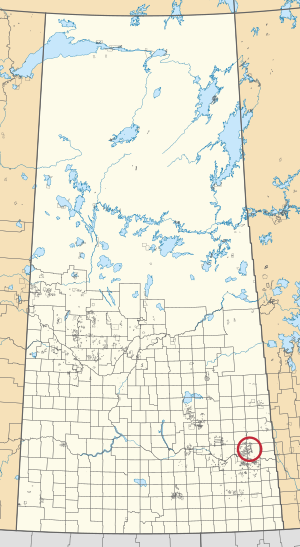Ochapowace 71-7 facts for kids
Quick facts for kids
Ochapowace 71-7
|
|
|---|---|
| Ochapowace Indian Reserve No. 71-7 | |

Location in Saskatchewan
|
|
| First Nation | Ochapowace |
| Country | Canada |
| Province | Saskatchewan |
| Area | |
| • Total | 194.2 ha (479.9 acre) |
| Population
(2016)
|
|
| • Total | 0 |
Ochapowace 71-7 is a special area of land in Saskatchewan, Canada. It is known as an Indian reserve and belongs to the Ochapowace Nation. This reserve is located about 11 kilometres northeast of a small place called Dubuc. According to the 2016 Canadian Census, no one was living on this specific reserve at that time.
Contents
What is an Indian Reserve?
An Indian reserve is a piece of land in Canada that is set aside for the use and benefit of a First Nations group. These lands are protected by law. They are not like regular towns or cities. Instead, they are managed by the First Nation community itself.
Purpose of Reserves
Reserves were created to provide a homeland for First Nations peoples. They allow communities to live together and keep their traditions. Each reserve is linked to a specific First Nation.
About the Ochapowace Nation
The Ochapowace Nation is a First Nations group in Saskatchewan. They are part of the Saulteaux people. Their traditional lands are in the southeastern part of the province. The Ochapowace Nation has several reserves, and Ochapowace 71-7 is one of them.
Community and Culture
First Nations like the Ochapowace Nation have rich histories and cultures. They often have their own languages, traditions, and ways of life. Reserves help them maintain these important parts of their heritage.
Location and Size
Ochapowace 71-7 is a relatively small reserve. It covers an area of 194.2 hectares. To give you an idea, that's about the size of 270 football fields. It is located in a rural area of Saskatchewan.
Population Status
The 2016 census showed that Ochapowace 71-7 had a population of zero. This means that no one was officially living on this specific reserve at that time. It is not uncommon for some smaller reserves to be uninhabited. Sometimes, people from the First Nation may live on other reserves belonging to their Nation.

